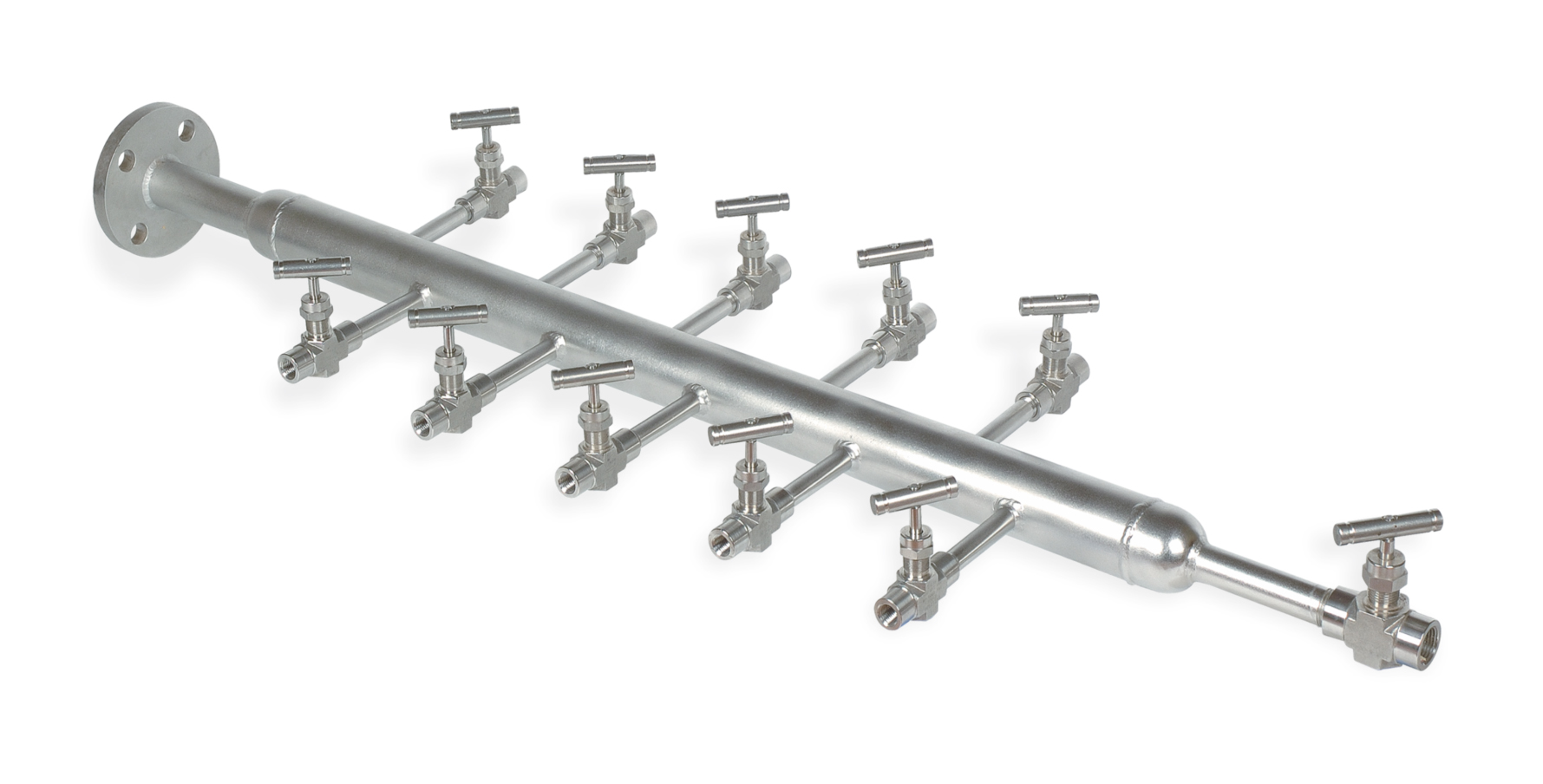In industrial plants and power generation systems, efficient distribution of compressed air or gas plays a vital role in ensuring smooth operations. This is where an Air Header becomes indispensable. An Air Header is a specialized piping device designed to distribute compressed air or gases from a single source to multiple destinations, ensuring uniform pressure and reliable supply across the system. Whether in oil and gas plants, refineries, chemical industries, or power stations, Air Headers contribute to safety, reliability, and operational efficiency.
In this blog, we will explore the definition, functions, benefits, and common applications of Air Headers, while highlighting why they are considered a crucial component in modern industries.
What is an Air Header?
An Air Header is a fabricated vessel or pipe assembly equipped with multiple outlets. It acts as a centralized distribution system for compressed air or inert gases, allowing one supply source to feed several control instruments, valves, or other process equipment simultaneously.
They are usually manufactured from robust materials such as stainless steel, carbon steel, or alloy steel to withstand harsh environments and varying pressure conditions. Depending on industrial needs, Air Headers are designed in wall-mounted, floor-mounted, or customized configurations.
How Does an Air Header Work?
The principle of an Air Header is simple:
- Compressed Air Supply – Air or gas enters the Air Header through a single inlet connection.
- Distribution Network – The Air Header is fitted with multiple outlet valves or connectors that distribute the compressed air evenly to several instruments or points of use.
- Regulation & Safety – Each outlet can be individually controlled, ensuring precise delivery of air while maintaining safety standards.
This mechanism eliminates the need for multiple separate pipelines, thus reducing space, cost, and complexity in industrial setups.
Key Uses of an Air Header
Air Headers have a wide range of industrial uses, making them an essential part of compressed air and gas distribution systems. Below are the primary uses:
1. Distribution of Compressed Air
The main function of an Air Header is to distribute compressed air from a single source to multiple devices or equipment. This ensures that various instruments can operate simultaneously without the need for multiple compressors.
2. Feeding Control Valves and Instruments
In process industries, numerous control valves and instruments rely on compressed air for operation. Air Headers act as the connecting hub, delivering stable pressure to ensure precise control and smooth automation.
3. Safety and Emergency Systems
Air Headers are often used in safety systems such as emergency shutdown valves (ESDVs) or fire protection systems, where consistent air supply is crucial for quick actuation.
4. Pneumatic Systems
Pneumatic actuators, tools, and devices require reliable compressed air. An Air Header ensures the distribution of air to multiple pneumatic systems across different areas of a plant.
5. Gas Distribution
Apart from compressed air, Air Headers are also used for distributing inert gases like nitrogen, which are often required in chemical and petrochemical industries.
Advantages of Using Air Headers
Using an Air Header provides numerous benefits for industries that depend on compressed air and gases. Some key advantages include:
1. Space and Cost Efficiency
Instead of laying multiple pipelines for each instrument or valve, an Air Header consolidates the distribution system, saving both space and installation costs.
2. Enhanced Safety
By centralizing the air distribution system, it is easier to monitor and maintain safe pressure levels. In critical industries like oil and gas, safety is a top priority, making Air Headers indispensable.
3. Durability and Reliability
Air Headers are built from high-grade materials that can withstand corrosive environments, extreme temperatures, and high-pressure conditions, ensuring long-term reliability.
4. Flexibility and Customization
They can be designed with varying numbers of outlets and in different configurations (vertical, horizontal, wall-mounted, etc.), making them adaptable to unique industrial requirements.
5. Easy Maintenance
Since all connections are centralized, inspections, repairs, and replacements become much easier compared to managing several independent pipelines.
Common Applications of Air Headers
The versatility of Air Headers makes them useful across multiple industries. Some of the most common applications include:
1. Oil and Gas Industry
Air Headers are widely used in offshore platforms and refineries for distributing compressed air to instruments, actuators, and safety systems.
2. Petrochemical Plants
These plants require reliable gas and air distribution to control processes and safety equipment. Air Headers help in streamlining air supply to multiple points.
3. Power Generation Plants
In power plants, Air Headers distribute compressed air to turbines, boilers, and control instruments, ensuring uninterrupted operation.
4. Pharmaceutical Industry
Air Headers are used for delivering clean, compressed air or inert gases to sensitive instruments in pharmaceutical manufacturing.
5. Steel and Cement Plants
Heavy-duty industries like steel and cement plants rely on pneumatic systems and automation, where Air Headers play a central role in distributing compressed air.
Materials Used in Manufacturing Air Headers
Air Headers are manufactured using different materials depending on the application and environmental conditions. Common materials include:
- Stainless Steel – Provides excellent corrosion resistance, suitable for chemical and marine applications.
- Carbon Steel – Used where strength is prioritized, often in high-pressure environments.
- Alloy Steel – Offers resistance to heat and harsh chemicals.
The choice of material depends on factors such as pressure requirements, environmental exposure, and industry standards.
Standards and Testing of Air Headers
To ensure quality and safety, Air Headers are manufactured and tested according to global standards such as:
- ASME (American Society of Mechanical Engineers)
- ASTM (American Society for Testing and Materials)
- ANSI (American National Standards Institute)
Testing often includes hydrostatic pressure testing, leak tests, and visual inspections to guarantee reliability.
Conclusion
An Air Header is a critical component in industrial systems that require the efficient and safe distribution of compressed air or gases. From oil and gas refineries to power plants and manufacturing facilities, Air Headers ensure that multiple instruments and systems receive a stable and reliable air supply. Their durability, flexibility, and ability to streamline operations make them a preferred choice in high-demand industries.
Whether it’s for controlling valves, operating pneumatic systems, or ensuring safety during emergencies, the role of Air Headers cannot be overlooked. As industries continue to modernize and automate, the importance of Air Headers in ensuring efficiency and reliability will only grow stronger.


